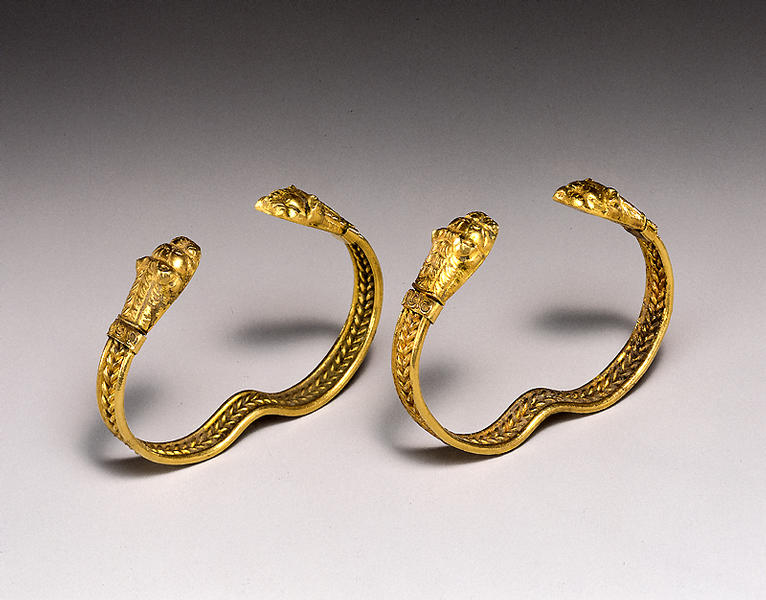Pair of Bracelets with Lion's-head Terminals
- Iran
- Persia, Achaemenid period
- Possibly late 5th to 4th centuries B.C.
- Gold
- H-3.8 W-6.7
Catalogue Entry
The lion's-head bracelet represents a familiar Achaemenid jewelry type, and even the indentation at the bottom of each of these circlets follows Achaemenid conventions.1 The details, however, are not in keeping with the standards of Achaemenid palace--style jewelry. This is especially true for the flat rendering of the bottom of the animals' heads. Only the carefully arranged manes are somewhat reminiscent of Achaemenid images. The twisted golden wires within the circlet are also unusual, and the rather abbreviated scrolls at the little cuffs under the lions' heads clearly refer to Greek decorative art. It should be noted that the lion bracelet was incorporated in the repertory of Graeco-Persian ateliers long before the breakdown of the Achaemenid Empire.2 However, these two bracelets are likewise far from Greek standards, and consequently they should be attributed to a somewhat provincial region with a local workshop tradition that must have had contact with both the Achaemenid and the Greek repertories. The style is not truly Greek but shows familiarity with Greek traditions, not from the heartland of the Achaemenids but influenced by the courts of the satraps (local Achaemenid governors). Present knowledge does not allow a precise regional attribution, but from the cultural point of view, the western regions of the Persian Empire, such as the northern shores of Asia Minor, would provide a perfect setting.
In view of the lack of truly Persian forms and the use of a Greek detail, a later Achaemenid-period date seems to be more appropriate than an earlier one.
MP
1. See, for example, bracelets from Susa in Paris, Louvre: Morgan 1905, pp. 48-49, fig. 78, pl. 5.1-.2. For other parallels, see Pfrommer 1990b, pp. 97-99.
2. See Pfrommer 1990b, pp. 100-7. For a piece with scrolls see ibid. pp. 339-40, no. 100; Hoffmann and Davidson 1965, pp. 158, 170-72, no. 63, fig. 63a,b.
